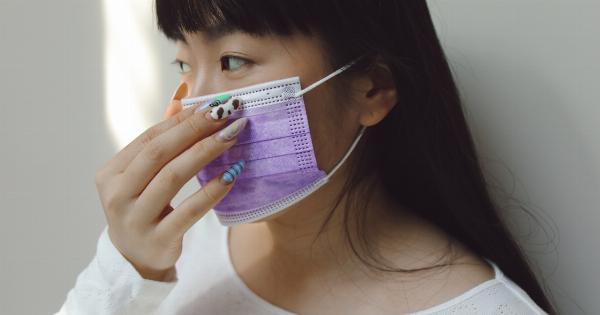Contact lenses are thin, curved lenses that are placed directly on the eyes to correct vision problems.
They are a popular alternative to traditional eyeglasses and offer several advantages, such as better peripheral vision and the ability to participate in sports activities without the concern of broken or misplaced glasses.
The popularity of contact lenses
Over the years, contact lenses have gained immense popularity among people of all ages. They provide a convenient and cosmetically appealing solution for individuals with vision problems.
Whether it’s nearsightedness, farsightedness, astigmatism, or even presbyopia, contact lenses offer a practical corrective measure.
Types of contact lenses
There are a variety of contact lenses available in the market, catering to different needs and preferences. The most common types include:.
- Soft contact lenses: Made of hydrogel or silicone hydrogel material, soft contact lenses are flexible and comfortable. They allow oxygen to reach the cornea, reducing the risk of eye dryness.
- Rigid gas permeable (RGP) lenses: These lenses are made of rigid plastic material that allows oxygen to pass through. RGP lenses provide crisp vision and correct astigmatism more effectively.
- Toric lenses: Designed specifically for individuals with astigmatism, toric lenses have different powers in different meridians of the lens and can correct irregular corneas.
- Multifocal lenses: These lenses are suitable for those with presbyopia, providing clear vision at different distances.
The risk of contact lens infections
Although contact lenses are generally considered safe and effective, they do pose a risk of infections if not used and cared for properly. Various factors can contribute to the development of infections, including:.
- Poor hygiene: Failing to wash hands thoroughly before handling contact lenses increases the risk of introducing harmful microorganisms to the eyes.
- Extended wear: Sleeping or napping with contact lenses increases the risk of infection as it reduces oxygen flow and traps bacteria against the eye.
- Improper cleaning and disinfection: Not cleaning or disinfecting lenses as directed allows bacteria and debris to accumulate on the lens surface.
- Wearing lenses past their expiration date: Expired contact lenses are more prone to bacterial contamination and may cause infection.
- Using tap water: Rinsing contact lenses or storing them in tap water can expose eyes to harmful microorganisms, including Acanthamoeba, which can lead to a severe eye infection called Acanthamoeba keratitis.
- Environmental factors: Exposure to water in swimming pools, hot tubs, or other bodies of water can introduce microorganisms to the eye, leading to infection.
Types of contact lens infections
Contact lens infections can vary in severity and symptoms. Common types of infections include:.
- Bacterial keratitis: Caused by bacteria, this infection leads to redness, excessive tearing, discharge, and blurred vision.
- Fungal keratitis: Fungal infections are less common but can result in severe damage to the cornea and may require intensive treatment.
- Acanthamoeba keratitis: As mentioned earlier, this infection is caused by the Acanthamoeba parasite and can be particularly difficult to treat. It can lead to vision loss or the need for a corneal transplant in severe cases.
- Giant papillary conjunctivitis (GPC): GPC is an inflammatory condition caused by an allergic reaction to foreign substances on the surface of the lens. Symptoms include itching, redness, and increased lens discomfort.
Preventing contact lens infections
While the risk of contact lens-related infections exists, they can be significantly minimized by following proper hygiene and care practices:.
- Wash hands thoroughly: Always wash hands with soap and water before handling contact lenses to keep bacteria at bay.
- Follow the wearing schedule: Adhere to the recommended wearing schedule provided by your eye care professional. Avoid sleeping in contact lenses unless they are specifically designed for extended wear.
- Clean and disinfect lenses: Use only recommended contact lens solutions to clean and disinfect lenses. Rub the lenses gently with solution to remove debris and microbes.
- Replace lenses as advised: Replace lenses as per the scheduled timeline provided by your eye care professional. Using expired lenses increases the risk of infection.
- Avoid tap water: Never rinse lenses or store them in tap water or any liquid other than the recommended solution.
- Keep lens case clean: Rinse the lens case with solution daily and let it air-dry to prevent the growth of bacteria or fungi.
- Protect lenses from water exposure: Remove lenses before swimming or participating in water activities. If needed, use swim goggles to protect the eyes.
Recognizing and treating contact lens infections
Early detection is crucial in treating contact lens infections to prevent complications. If you experience any of the following symptoms, seek prompt medical attention:.
- Redness and irritation that doesn’t subside
- Eye pain or discomfort
- Increase in light sensitivity
- Excessive tearing or discharge
- Blurred or hazy vision
- Feeling as if something is stuck in the eye
Your eye care professional will determine the appropriate treatment based on the type and severity of the infection. Treatment options may include prescription eye drops or ointments, oral medications, or in severe cases, surgical intervention.
Contact lenses and children
While children can wear contact lenses, it is essential to ensure they can handle the responsibility of proper lens care and hygiene.
Parents should closely supervise their children and teach them the importance of following hygiene practices to reduce the risk of infection.
Conclusion
Contact lenses can significantly improve vision and offer a convenient alternative to traditional eyeglasses. However, it is essential to prioritize proper hygiene and care to minimize the risk of infections.
By following the recommended guidelines provided by eye care professionals, you can enjoy the benefits of contact lenses while keeping your eyes healthy and infection-free.




























